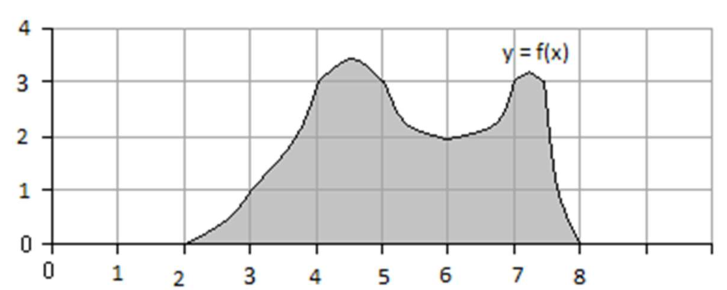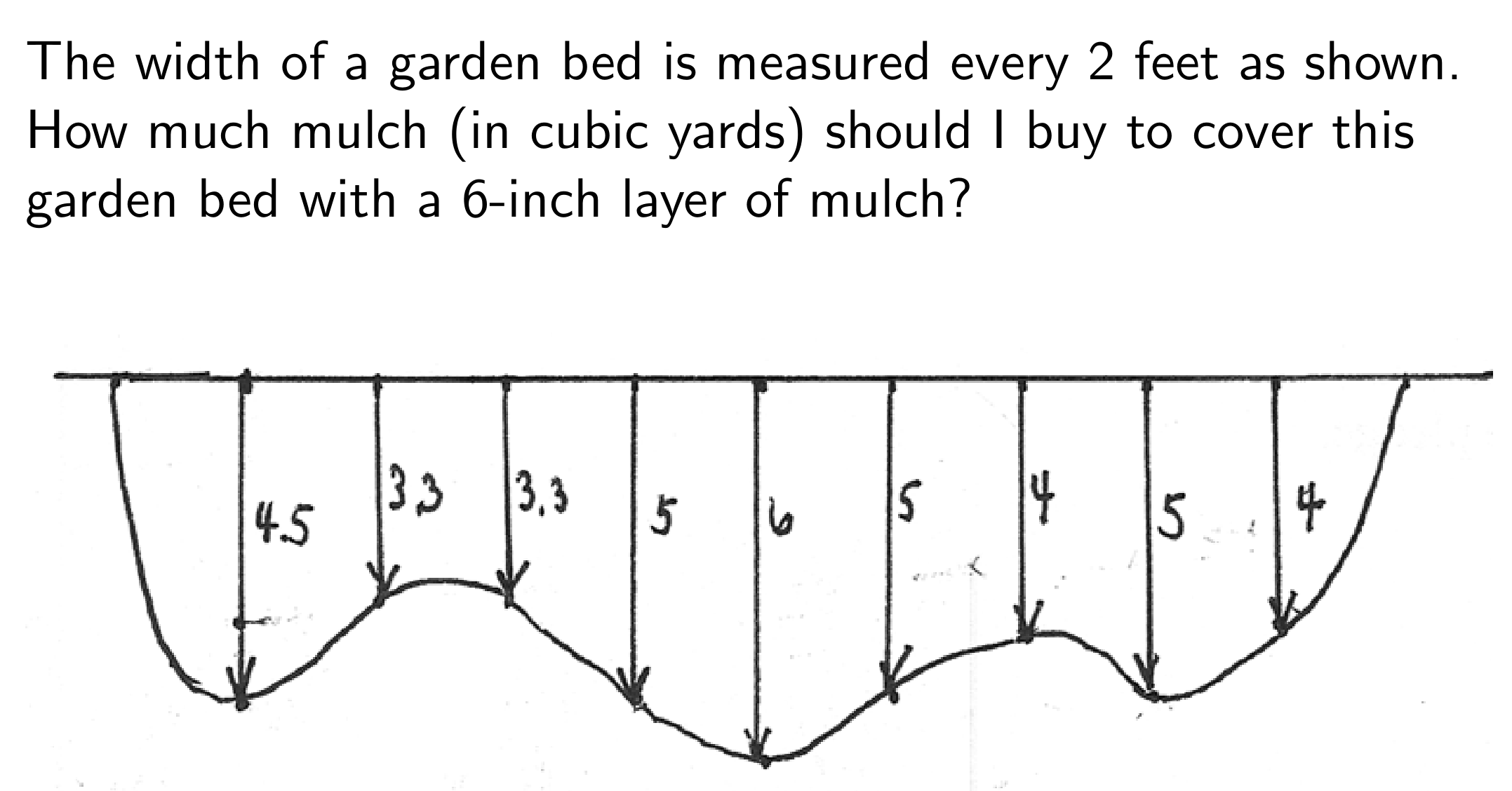Stepwise problems - Thu. 11:59pm
Partial fractions
01
01
Distinct linear factors
Compute the integral:
Solution
01
(1) Write the partial fractions general form equation:
(2) Solve for constants.
Cross multiply:
Plug in
, obtain so . Plug in
, obtain so .
(3) Integrate each term:
Link to original
02
02
Long division first
Compute the integral:
Solution
02
(1) Numerator degree is not smaller! Long division first:
Now this already has the form of a partial fraction decomposition, so we proceed directly to integration.
(2) Integrate using power rule (with log):
Link to original
03
03
Repeated factor
Compute the integral:
Solution
03
(1) Write the partial fractions general form equation:
(2) Solve for constants.
Cross multiply:
Plug in
, obtain . Plug in
, obtain . Plug in
, obtain:
(3) Integrate each term:
Optional simplification:
Link to original
Simpson’s Rule
04
01
Simpson’s Rule
The chart above shows a record of ambient temperatures measured each 15 minutes over 3 hours. Compute the approximate average temperature using Simpson’s Rule. You may use a calculator to resolve the arithmetic in your final expression.
Link to originalSolution
04
(1) Recall the formula for the average value of
over : Here
and :
(3) Use
in Simpson’s Rule:
(4) Plug into average value formula:
Link to original
Regular problems - Sun. 11:59pm
Partial fractions
05
04
Partial fractions - irreducible quadratic
Compute the integral:
Solution
05
(1) Perform long division:
(2) Use
to integrate: Recall formula:
Choose
. Then: The final answer is therefore:
Link to original
06
05
Partial fractions - long division
Compute the integral:
Solution
06
(1) Numerator degree is not smaller! Long division first:
(2) Factor denominator:
(3) Write the partial fractions general form equation (for the second term):
(4) Solve for constants:
Cross multiply:
Plug in
, obtain so . Plug in
, obtain so .
(5) Integrate by terms:
Link to original
07
06
Partial fractions - big generic
Give the generic partial fraction decomposition (no need to solve for the constants):
Solution
07
(1) Observe that
: On the other hand,
cannot be factored further. (Its zeros are imaginary.) Now all denominator factors are either linear or irreducible quadratic.
(2) Write the partial fractions general form equation:
(3) Notice a few things:
Link to original
- Quadratic
acquires linear term on top - Linear
is to 3rd power so it has repetition up to 3rd power - Linear
and are only to 1st power.
08
07
Partial fractions - linear and quadratic
Compute the integral:
Solution
08
(1) Denominator has degree 3, numerator has degree 2, therefore long division is not necessary.
(2) Write the partial fractions general form equation:
Notice that
is an irreducible quadratic (cannot be factored). So we have:
(3) Solve for constants:
Cross multiply:
Plug in
, obtain: Expand RHS:
Comparing
terms, obtain: and thus . Comparing constant terms,
.
(4) Integrate by terms:
Note A: For the last term, use the formula:
Link to original
09
08
Partial fractions - repeated factor
Compute the integral:
Solution
09
(1) Write the partial fractions general form equation:
Observe that
appears in degree 3 in the integrand, so we have one term for each power up to 3 in the partial fraction decomposition.
(2) Solve for constants:
Cross multiply:
Plug in
, obtain so . Plug in
, obtain . Plug in
, obtain: Plug in
, obtain:
(3) Integrate each term:
Optional simplification:
Link to original
Simpson’s Rule
10
02
Simpson’s Rule for volume by shells
Use Simpson’s Rule with
to compute the volume of the solid obtained by revolving the pictured region about the -axis. Can you do it without using a calculator?
Link to originalSolution
10
(1) Recall shells formula:
(2) Interpret:
Bounded above by
. Bounded below by -axis. Bounded left by
. Bounded right by . Obtain:
(3) Create table of values to apply Simpson’s Rule:
(4) Recall Simpson’s Rule formula:
Here
since in this formula represents the integrand values. Note that
. Plug in:
Therefore:
Therefore:
Link to original
11
03
Area of a garden bed
Link to originalSolution
11
(1) Set up integration:
Set
at the left upper corner, with extending to the right, extending downwards. Then:
(2) Create table of values:
(3) Recall Simpson’s Rule formula:
Here
and . Thus:
(4) Compute cubic yards from known surface area:
Mulch is
deep, so the volume is: Link to original


